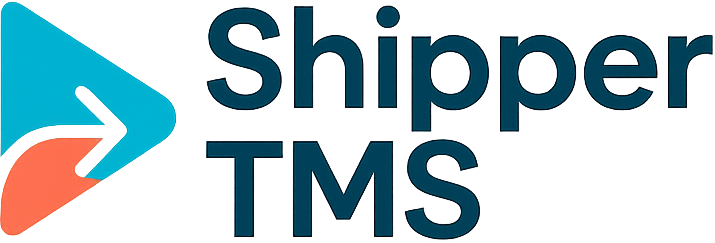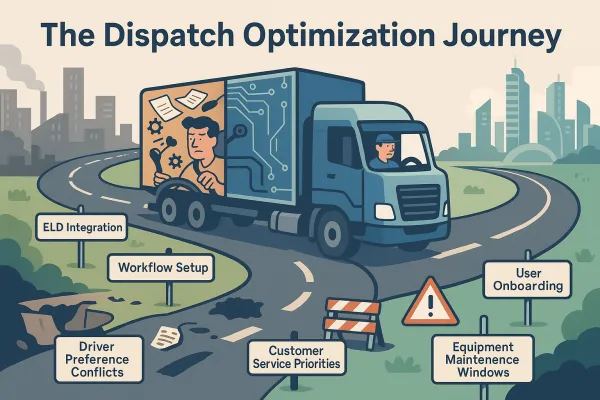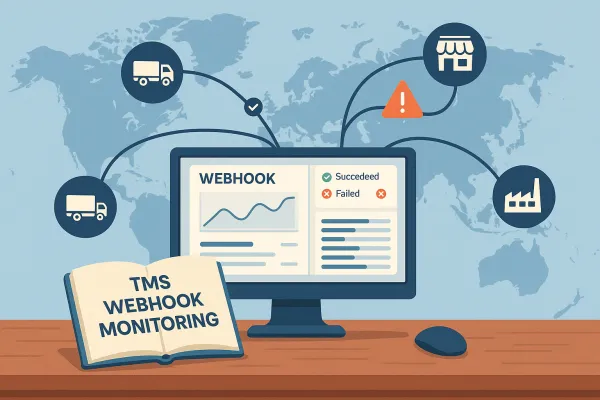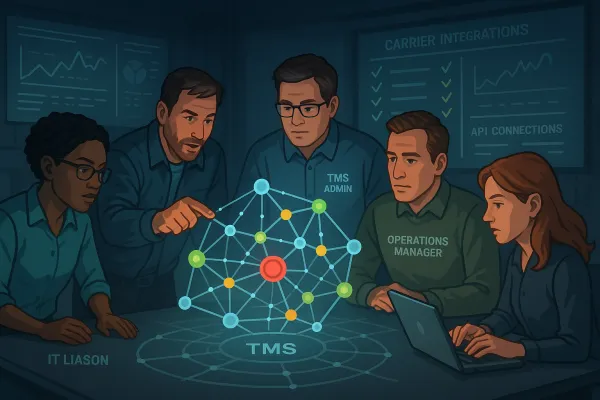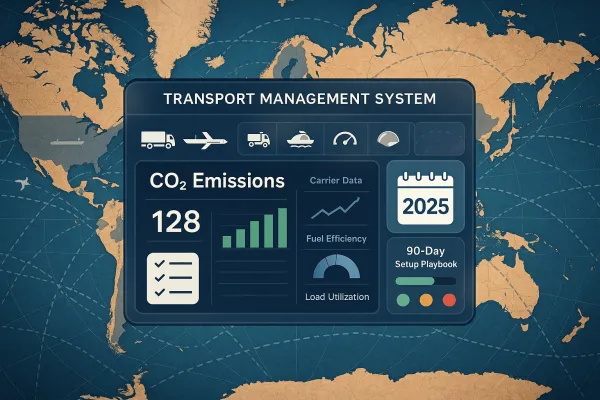TMS Change Management: The 90-Day User Adoption Playbook That Cuts Resistance by 75%
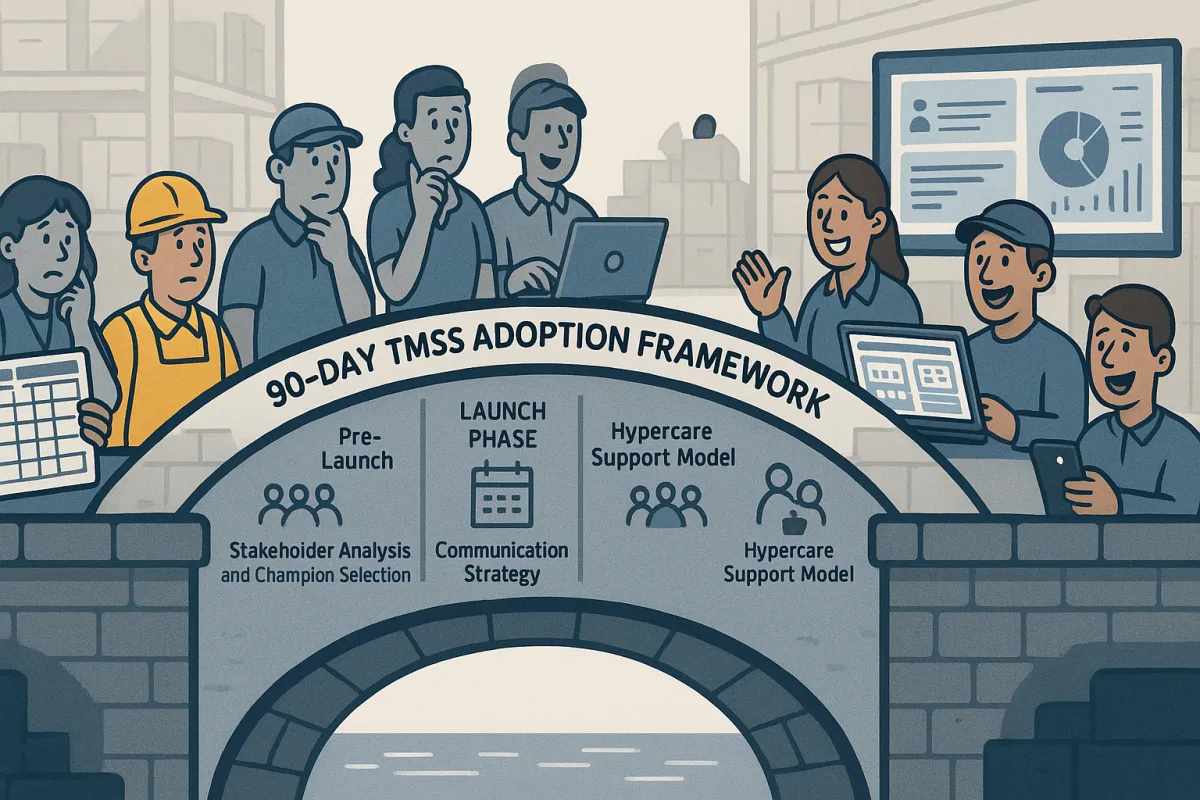
Your TMS implementation went live two weeks ago. The system works. The data is flowing. Your carrier integrations are solid. But warehouse supervisors are still printing Excel sheets, customer service keeps bypassing rate shopping features, and your transport manager just asked when the "real system" goes live.
Sound familiar? More than 70% of organizations encounter roadblocks during TMS deployment, and the biggest barrier isn't technical. Approximately 50% of users are hesitant to adapt to new tools, turning what should be efficiency gains into daily frustration.
The difference between TMS success and expensive failure comes down to one thing: getting people to actually use what you've built. This 90-day playbook shows you exactly how to overcome user resistance and build adoption that sticks.
Why 70% of TMS Rollouts Hit the User Adoption Wall
The statistics tell a brutal story. More than 50% of TMS adopters see positive ROI within 18 months, which means nearly half don't. 70% of digital transformation efforts fail due to lack of user adoption and resistance to change.
The real costs hit fast. Failed implementations waste budget and damage relationships with carriers and customers who experience service disruptions. Teams keep using spreadsheets and manual processes because nobody explained why the new workflows matter. Companies with low user adoption rates spend significantly more on IT support compared to those with high adoption rates.
When resistance takes hold, it spreads. Poor user adoption sends a message that change initiatives and process changes can be ignored. One frustrated department becomes two, then three, until your entire organization questions whether leadership knows what they're doing.
Leading TMS solutions like MercuryGate, Descartes, Manhattan Active, and Cargoson all work when users actually engage with them. The platform isn't the problem. The approach to change management is.
The 90-Day TMS User Adoption Framework: Pre-Launch (Days -30 to 0)
User adoption starts before anyone touches the system. The teams that succeed spend 30 days building ownership before go-live.
Week 1-2: Stakeholder Analysis and Champion Selection
You need two lists: power users who can become champions, and potential resistors who need extra attention. Start with your transport coordinator who's been managing carrier rates in Excel for five years, your warehouse supervisor who knows every workflow shortcut, and your customer service lead who fields complaints when shipments go wrong.
Organizations employing tailored training programs experience a 70% increase in user satisfaction and a 65% improvement in adoption rates. This means creating role-based user personas for targeted approaches, not generic training sessions that waste everyone's time.
Power users become your internal champions when they see how the TMS solves their daily problems. The warehouse supervisor stops printing labels manually when they see automated label generation. The customer service rep embraces real-time tracking when it stops angry customer calls.
Week 3-4: Communication Strategy and Initial Buy-in
Address the "what's in it for me" question by department. Operations wants faster processing. Finance wants cost visibility. Sales wants delivery commitments they can actually keep. Don't promise everything to everyone, but show each team their specific wins.
Set realistic expectations for the change timeline. Week one will be slower, not faster. Week three is when muscle memory starts building. Month two is when teams see real productivity gains. Teams with regular feedback opportunities see a 50% reduction in resistance, as employees feel valued and heard.
Create feedback loops before launch. Use surveys and focus groups to gather concerns and suggestions. When people know their input shapes the rollout, resistance drops dramatically.
Launch Phase (Days 1-30): The Critical First Month
Go-live week determines whether your implementation becomes a success story or a cautionary tale. Organizations using a phased rollout strategy can reduce implementation time by up to 50%.
Week 1: Hypercare Support Model
Deploy extra resources during the first week. Your normal support structure isn't enough when everyone's learning simultaneously. Plan for 3x normal support ticket volume and have champions available for real-time questions.
Common Day 1 issues are predictable: login problems, workflow confusion, and integration hiccups. Prepare response protocols for the top ten issues you know will surface. When users get fast answers, they stay engaged.
Too often, training is rushed—limited to a single walkthrough or basic manual—leading to confusion, resistance or errors after launch. To drive adoption and quicker benefit realization, training must be clear, role-specific and focused on building user confidence from day one.
Week 2-4: Momentum Building
Track progress beyond login frequency. Measure meaningful actions: shipments processed, rates compared, labels generated, tracking accessed. Set realistic utilization targets of 50-70% initially, not 100%.
Data reveals that showcasing initial successes can enhance buy-in by as much as 80%. Document and share success stories weekly. When the warehouse team processes 20% more shipments in week three, tell everyone. When customer service resolves tracking queries in half the time, make it visible.
Adoption Phase (Days 31-60): Building Confidence and Competency
Month two is where superficial engagement becomes genuine adoption. Teams either embrace the new workflows or find creative ways to avoid them.
Skills Development and Training Programs
Roll out advanced training for power users who've mastered basic functions. Data suggests that personalized training paths can enhance completion rates by 50%, making learning more relevant and engaging for users. Create certification programs that recognize expertise and build internal champions.
Multi-tiered training works: basic functions for everyone, advanced features for power users, administration skills for system owners. Don't dump advanced features on users who haven't mastered the basics.
Feedback Loops and Continuous Improvement
Use real-time analytics to identify struggle areas. If label printing takes longer than expected, investigate workflow bottlenecks. If rate shopping isn't being used, find out why. Organizations with peer advocates report a 50% faster adoption rate of new technologies.
Adjust system configurations based on user input. When feedback reveals that carrier selection screens are confusing, simplify them. When users request additional reporting fields, evaluate and implement reasonable requests quickly.
Optimization Phase (Days 61-90): Cementing Long-term Success
Month three separates temporary compliance from lasting change. Teams that reach 90 days with strong engagement typically maintain adoption long-term.
Performance Analytics and Success Metrics
Measure business impact, not just system usage. Track productivity improvements, cost savings, and error reductions. Calculate time savings from automated processes. Document customer satisfaction improvements from better tracking and communication.
Build KPI dashboards that show adoption's business value. When leadership sees freight cost reductions and processing time improvements, they support ongoing change management efforts.
Sustainability Planning
Establish long-term support structures that don't depend on implementation consultants. Train internal super-users to handle routine questions. Create documentation that reflects your actual workflows, not vendor templates.
Plan continuous learning programs. TMS platforms evolve with new features and carrier integrations. Regular training sessions keep teams current and engaged.
Crisis Management: When Resistance Persists
Even perfect planning hits resistance. The key is identifying and addressing it before it spreads.
Watch for warning signs: declining usage after initial adoption, workarounds that bypass the system, complaints about old methods being "better." A 2019 study noted that 75% of employees are reluctant when faced with new technology. To address this, involving key personnel from the outset provides a sense of ownership and lowers pushback.
Intervention strategies vary by resistance type. Technical resistance needs better training or system adjustments. Cultural resistance needs champions and success stories. Resource resistance needs leadership support and dedicated time for learning.
Know when to escalate versus when to pivot. If a key user continues resisting after training, coaching, and support, involve their manager. If an entire department struggles, examine whether workflows need adjustment.
Measuring Success: KPIs That Matter
Traditional metrics miss the real story. Login frequency means nothing if users immediately switch to Excel. Focus on usage depth: functions accessed, transactions completed, workflows followed end-to-end.
Business impact measurement matters more than system statistics. Track productivity gains, cost reductions, error decreases, and customer satisfaction improvements. Companies with high technology adoption rates are 2.5 times more likely to be market leaders.
ROI calculation templates should include both hard savings (reduced processing time, lower freight costs) and soft benefits (better customer service, improved visibility, reduced errors). When teams see how their adoption drives business results, engagement becomes self-sustaining.
The 90-day framework works because it treats user adoption as a business process, not a training event. Teams that follow this playbook see 75% less resistance and 90-day utilization rates above 80%. The difference between TMS success and failure isn't the platform you choose—it's how you help people embrace the change.
